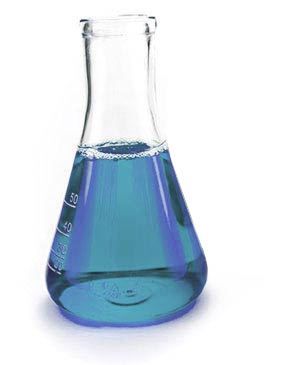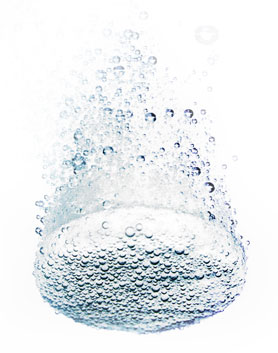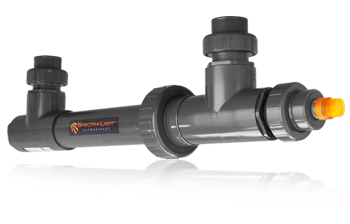Shopping Cart
All orders qualify for risk-free 30 day trial & complimentary US shipping!
-- No items so far --
Total:
0
Support
Need help? Our Pool Experts are here to help.
All orders qualify for risk-free 30 day trial & complimentary US shipping!
-- No items so far --
Total:
0
Need help? Our Pool Experts are here to help.
As much as we all love the thought of a pool with zero chemicals, chemical free pools do not exist. At least ones that are safe enough to swim in.
While some companies do market “chemical free pools,” these products have been banned in some countries as unsafe. The number one priority for any pool owner should be safety. And the bottom line is that any pool that claims to be chemical free is unsafe.
But there is good news. UV pool systems allow for drastically reduced chemical levels. When using UV, just 0.5 ppm free chlorine is adequate, according to the World Health Organization. How low is 0.5 ppm? That’s about the level in tap water.

Beware of any “chemical free” pool systems that claim that no residual sanitizer is required. There are no chemical free commercial pools in the United States. Why not? It’s impossible to maintain any level of safety without at least a low residual of chlorine or some other sanitizer like hydrogen peroxide. Companies that advertise chemical free pools are typically selling pool ozonators, which are also called pool ionization systems. Pool ionizers add copper and sometimes other heavy metals to pool water, which can cause a host of problems. Ozonators can work well, but not the types commonly found in residential pools. Some commercial pools utilize ozonators to supplement chlorine. The typical cost is $50,000 dollars or more. These systems require an ozone destructions chamber because ozone is toxic to humans. In residential pools, the amount of ozone produced is simply not enough ozone to oxidize or sanitize effectively. In an effort to eliminate chemicals, some pool owners have converted to salt water pools. However, salt water pools are not chlorine free or chemical free. The salt is converted to chlorine, which makes a saltwater pool no different from a typical chlorinated pool.
- National Swimming Pool Foundation
In 2004, the Austrailian Government took action against a number of companies that claimed to sell chemical free pool systems. Pool ionizers are often sold as an alternative to chlorine and/or chemicals. These products claimed to work by releasing silver ion, copper ions, or both into pool water. In many cases, these products were promoted as superior to chlorine. The Australian government noted that these metal ion-based products had not been accessed according to scientific standards for safety or efficacy. The government had scientific data that called the efficacy of these products into question. The government had a serious concern about these products since waterborne pathogens transmitted to swimmers through pool water can be dangerous, or worse, deadly. The bottom line is that attempting to operate a chemical free pool is a health and safety risk to anyone entering the water.
It’s easy to see algae in a pool. Ironically, it’s what you can’t see that is the most dangerous. You can’t see bacteria, viruses, and protozoa. As a pool owner, it’s easy to get a false sense of security. Swimming pools and spas can transmit microorganisms that cause disease unless the water is protected by a disinfection system that can effectively kill microorganisms. Pool sanitizers need to act quickly. Microorganisms can quickly pass from one person to another through the eyes, nose and mouth. Some of these microorganisms can cause diarrhea, hemorrhagic colitis, and hepatitis. There is an effective alternative to chemical free pools – low chlorine pools.
You’re probably not surprised that “chemical free pools” are too good to be true. The good news is that you don’t need a chlorine free pool to realize the benefits you’re seeking. A low chlorine pool can accomplish the same thing, safely. When a low 0.5 ppm concentration of chlorine is combined with ultraviolet pool disinfection, bacteria, viruses and other pathogens can be killed in less than a second. And scientific studies have shown that a low 0.5 ppm residual of free chlorine (about the level in drinking water) is safe for swimmers. You may be surprised that free chlorine is undetectable in pool water.

Burning eyes, skin irritations, allergies, and asthma are a result of combined chlorine, also called chloramines. Pool chloramines are a by-product of pool chemicals that can be eliminated by UV pool systems, the Gold Standard of commercial pools. Ultraviolet disinfection systems can lower chemical demand and destroy pool chloramines extremely effectively. UV systems have now been installed in nearly every major aquatic center pool in the U.S.
The World Health Organization speaks highly of UV and its ability to kill microorganisms at free chlorine concentrations of 0.5 ppm or lower. According to the World Health Organization, lower free chlorine concentrations (0.5 ppm or less) are adequate when chlorine is used in combination with UV disinfection. The WHO goes on to explain that UV purifies circulating water. It inactivates microorganisms and breaks down some pollutants (e.g. chloramines) by photo-oxidation, decreasing the oxidant demand of the purified water. You can have all the benefits of a chlorine free pool without the health risks. To learn more about ultraviolet pool systems, visit the UV Pool section, or watch the informational video.
There are a number of alternatives for swimming pool sanitation. Compare UV to chlorine, ozone, ionization and other technologies here.
